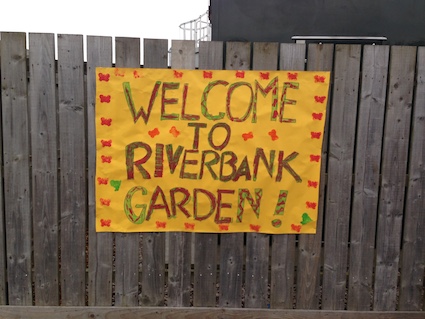
Last week I had the privilege of visiting Riverbank Primary School in Aberdeen to be one of several judges of the trug gardening competition. This year, the school decided that it would be a great way to celebrate the outdoor spaces and raise awareness of the benefits of gardening.
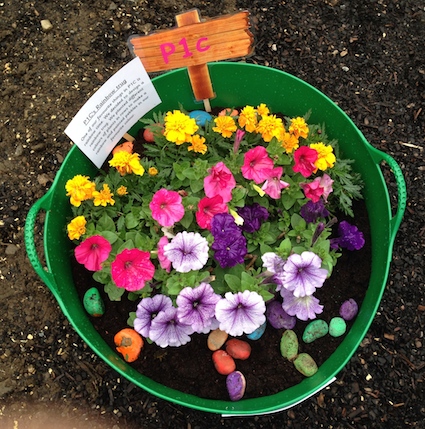
One challenge facing teachers with embedding learning outdoors is making the first steps and trying out new ways of working. Most of the teachers at Riverbank are not gardeners, so this seemed a gentle way for all into what gardening can offer.
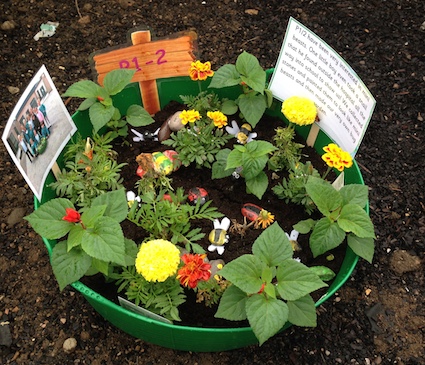
Each class was given some soil and a trug. Collectively the trugs represented the school colours. Linda – one of the nursery staff – drilled holes in the bottom of each one for drainage. Each class was given a small budget and had to decide upon a theme for their trug. 26th June was the show date so all the trugs had to be ready for this event.
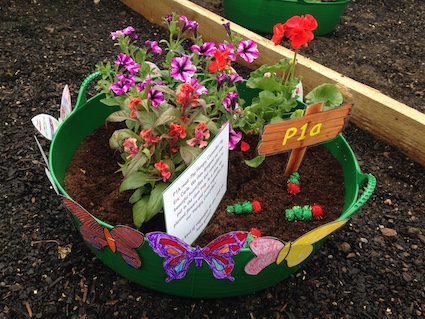
The trugs were displayed in the new garden area. It is so new that it was the perfect place to showcase every one. Parents and siblings came along to have a look.
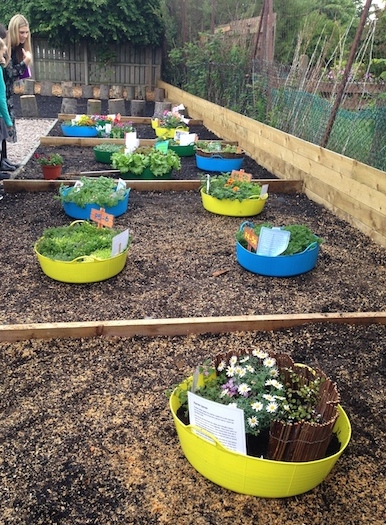
What came over clear and strong was the level of involvement by all the children in every class. The children in each class had to reach a consensus about the theme. They had to research the plants and the planting schemes. They had to personalise the trugs and add creativity.
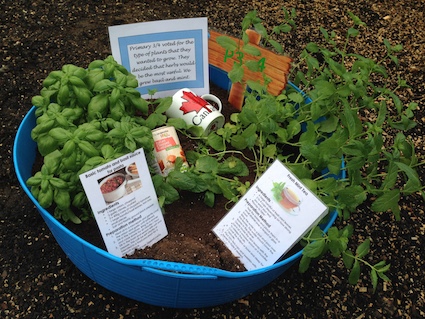
Very often gardening in schools happens as a result of one or two keen members of staff or a volunteer who comes along. With gardening clubs, usually only a small number of children get involved. Sometimes gardening is relegated to being an activity for those outwith mainstream classes – for those who require additional support.
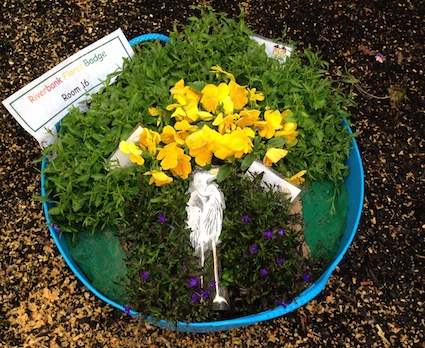
With a class trug, every child was involved. Riverbank Primary is a Rights Respecting School. The right of every child to have a say (Article 12) was evident. Whilst I was there, I asked lots of children about their gardening trug. Every child responded positively and enthusiastically about what they had done.
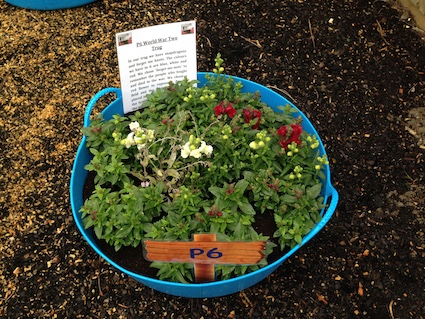
The excitement and levels of interest from the children totally amazed the staff. Even those who didn’t know one end of a trowel from the other found themselves carried along by the children’s enthusiasm and care. It also enabled the teachers to offer gardening in a way that matched their skill sets – that is as an enterprising, creative learning opportunity for their children.
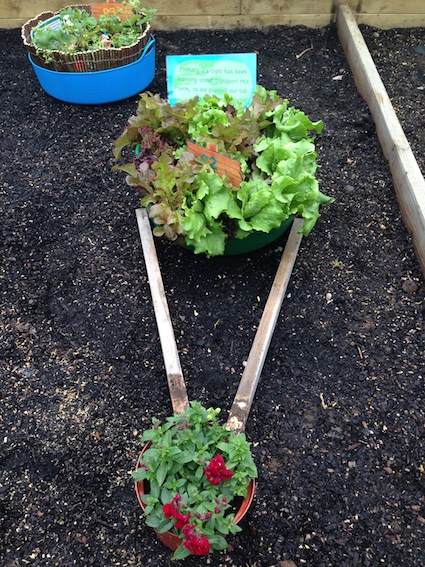
The trugs are not perfect. The project was one big experiment. Some plants died before the event. Not every plant flowered on time. The approaches to their development varied from class to class. This is how it should be. This is the reality of gardening – you can only learn by doing and finding out experientially. It is a mix of art and science. The beginning is doing a project like this.
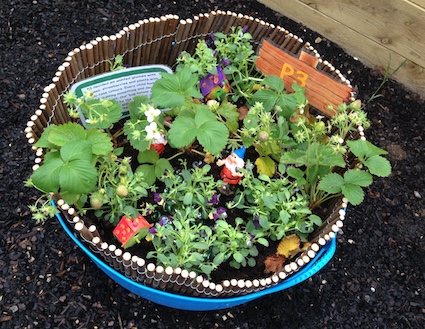
The creativity and care displayed added value which was unexpected. The children’s suggestions enriched the displays. For example, the P7 trug was a Smurf World instead of a Fairy Garden. The children sketched out their ideas and thought about ways they could make it come together. as the children didn’t have any Smurf models they printed off the pictures and laminated them instead.
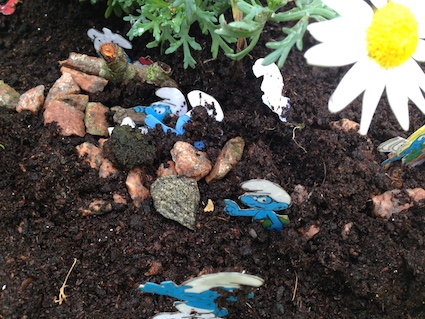
The other positive aspect of this whole school project is that it was a great way for children, parents and staff to see the school garden space and use it. It is very new and plans are afoot to turn it into a learning area for everyone to enjoy.
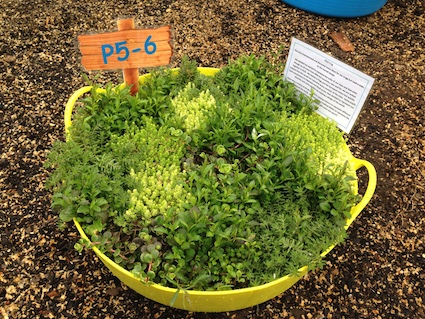
The P5/6 winning trug was chosen for its theme. The class brainstormed and discussed many ideas for the trug and voted on the overall design. They decided they wanted to represent the diversity and unity of their class and that even though they all come from different countries, near and far, they are united together in P5/6. There was a variety of shrubs planted in varying colours to represent the different continents around the world. Blue trailing lobelia was planted to represent the ocean and the class are hoping the flowers will come out soon!
I hope this “Garden Show” is an inspiration to others. It is a simple idea that children really enjoy and can be the springboard to other bigger whole class or whole school gardening projects. Gardening can be and should be a truly inclusive activity which every child gets to experience in a fun and child-centred, child-led way. Thank you Riverbank Primary for inviting me to see the results.
UPDATE: In December 2015, Riverbank Primary School was awarded first prize in Aberdeen City’s EcoCity Junior in Bloom Award. The classes were also preparing to turn their garden trugs into Christmas themed miniature gardens.




















I love this idea. Especially when not all teachers are keen to gardening with their class. I would like to start this initiative at our local school in Canada. I have a few questions about when the contest is over….
What happens when the school year has ended? Do the lovely gardens/trugs stay at school or are the sent home with one lucky child from each class? If they are sent home is there a raffle of some sort? If the trugs stay at school during the summer months, who is responsible for watering?
Hello Jill
I think – the trugs stayed at school. They were moved to a courtyard where it was easier for the janitor or staff popping in to water them from time to time. However I love the idea of a child adopting and caring for one over the holidays.
The trugs were continued this year – at Xmas they were decorated with a Xmas theme. Yesterday I was visiting the school and they had been prepared with fresh soil for this coming summer.
Thanks Juliet.
I think the only way this work in my neck of the woods is for the trugs to be taken home over the holidays.
Jill
What time of year did u start this?
It was a summer term project – began in April. Gardens were judged at the end of June – I think at a time that coincided with the Chelsea Flower Show.